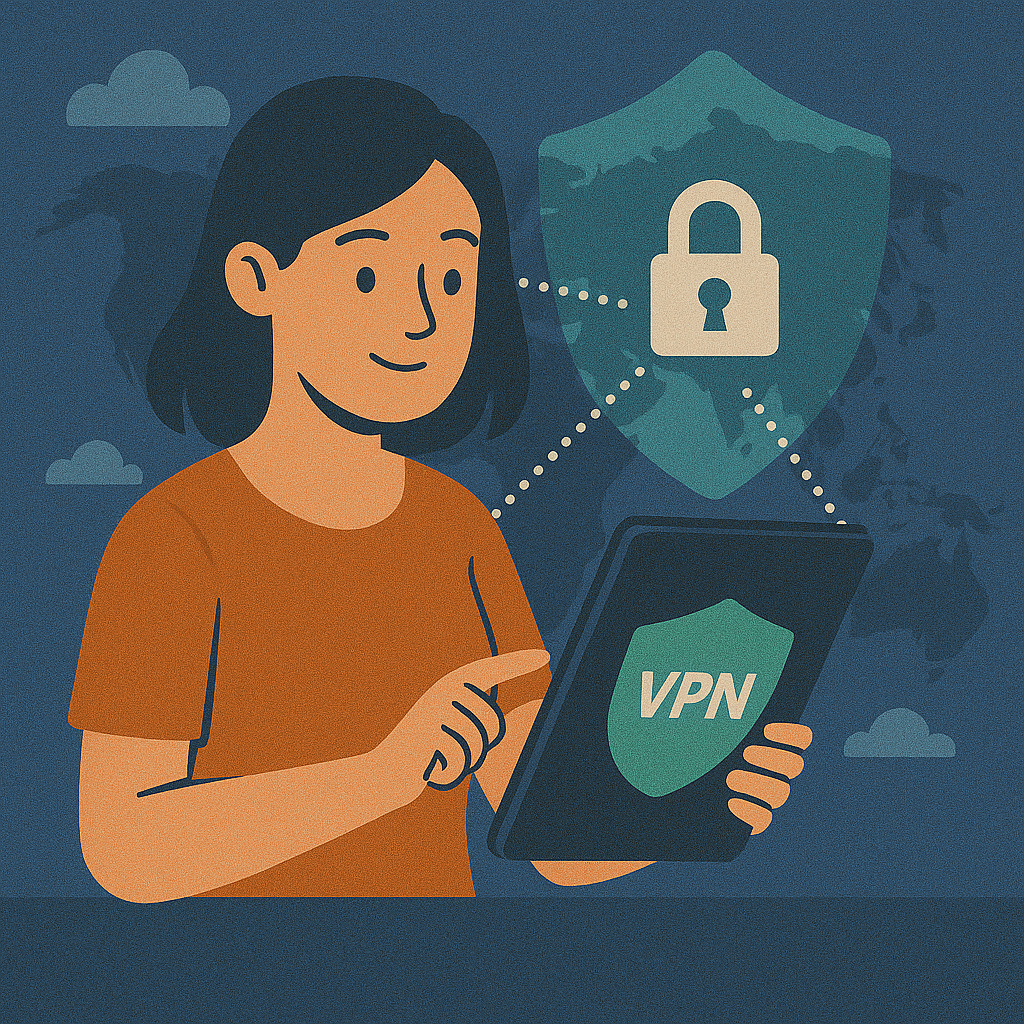
VPN Protocols — which one should you actually use in 2025?
Speed vs privacy, connection stability and device support. A practical UK-focused guide for Windows, iOS/Android and routers.
Quick answer
Use WireGuard (or its branded variants like NordLynx) for everyday browsing, streaming and mobile use. Switch to OpenVPN (UDP) when a network blocks or throttles WireGuard, and to OpenVPN (TCP) when only port 443 works (e.g., strict public Wi-Fi). Keep IKEv2/IPsec as a fallback on iOS and older routers for fast handovers between Wi-Fi and 4G/5G.
How a VPN protocol actually affects your experience
“VPN protocol” means the rules a VPN app uses to create and maintain an encrypted tunnel. Those rules define how keys are exchanged, which ciphers are used, how packets are authenticated and how resilient the tunnel is to flaky networks. In practice this translates into three things you feel immediately: speed, reliability and unblockability.
- Speed: WireGuard’s lean code and modern crypto (ChaCha20-Poly1305) typically deliver the highest throughput and lowest CPU usage.
- Reliability: IKEv2 shines on mobile thanks to MOBIKE and quick reconnections; OpenVPN is stable almost everywhere.
- Unblockability: OpenVPN over UDP is common; when networks filter UDP, TCP/443 often slips through as it looks like normal HTTPS.
Not sure your provider or network is the bottleneck? Run a baseline with our UK page VPN speed test and then compare protocols on the same server.
WireGuard / NordLynx — the default for 2025
WireGuard’s design goal was simplicity and performance. With only a few thousand lines of code, it’s easier to audit and maintain than legacy stacks. It pairs modern primitives (NoiseIK handshake, Curve25519, ChaCha20, Poly1305) with kernel-level efficiency on Linux and very competitive results on Windows/macOS/iOS/Android. Many providers market a tuned implementation (e.g., NordLynx) that adds NAT-style double-translation on the server to preserve shared IP privacy without keeping user-identifying state.
Use it for: streaming, gaming, everyday browsing, mobile switching between Wi-Fi and 5G. If an app offers “auto” and you’re in the UK on a normal network, it’ll likely pick WireGuard already.
When not to: Some office or public networks block UDP entirely. If connection attempts stall, flip to OpenVPN-TCP (below) or try different ports. See also our guides: geo-blocks, DNS leak checks, and kill switch.
OpenVPN — the compatibility champion
OpenVPN is battle-tested, open source and flexible. It runs in two transport flavours:
- UDP: best for speed/latency; works well for streaming and gaming.
- TCP: slower due to retransmission over a reliable stream, but highly versatile — especially on port 443 where it resembles HTTPS and can bypass strict firewalls.
Use it when: WireGuard is blocked or you need maximum compatibility (airports, hotels, campuses). On Windows, pair it with our Windows setup tips; for routers see router setup.
IKEv2/IPsec — rock-solid roaming on iOS
IKEv2 is brilliant at moving between networks without dropping the tunnel. Apple devices support it natively, and many enterprise gateways are tuned for it. It’s fast, secure when configured with strong suites, and particularly smooth on iPhone/iPad.
Use it for: iOS devices and some older routers. Follow our platform guides for iPhone setup and Linux setup.
Less common or legacy options
L2TP/IPsec and PPTP are obsolete for privacy and generally disabled by reputable services. SSTP (Microsoft) and Proprietary “stealth” modes can help in niche censorship scenarios but are slower — try OpenVPN-TCP first.
Security checklist for any protocol
- Enable a Kill Switch.
- Verify you’re not leaking DNS: run our DNS leak check.
- Pick a nearby UK or EU server for speed (see Which server?).
- Retest after updates with the speed test.
Recommended defaults (quick table)
| Scenario | Pick | Why |
|---|---|---|
| Everyday browsing/streaming | WireGuard | Fastest and efficient |
| Strict public Wi-Fi blocks | OpenVPN-TCP 443 | Looks like HTTPS |
| Mobile hopping Wi-Fi ↔ 5G | WireGuard or IKEv2 | Quick handovers |
| Old routers / legacy gear | OpenVPN | Broad support |
If the video doesn’t load, watch on YouTube: NordVPN Channel.
UK-focused tips for streaming and travel
For iPlayer or UK services abroad, protocol choice matters less than the quality of the UK endpoint. Start with WireGuard; if the app fails to connect on hotel Wi-Fi, toggle OpenVPN-TCP. See our streaming guide: VPN for streaming (UK).
FAQ — common protocol questions
Is WireGuard safe enough for privacy?
Yes. Modern cryptography and small codebase make it an excellent choice. Providers add NAT-style techniques so you still share an exit IP without storing long-term identifiers.
UDP or TCP for OpenVPN?
Prefer UDP for speed; switch to TCP on port 443 when a network blocks UDP or you need maximum reliability on restrictive Wi-Fi.
Best protocol for iPhone?
WireGuard for performance; IKEv2 is a great fallback thanks to smooth roaming. Follow our iPhone setup.
What about gaming?
Use WireGuard for the lowest latency. Also choose nearby servers (see Which server?).
Disclosure: We may earn a commission from affiliate links. This never affects our recommendations.
